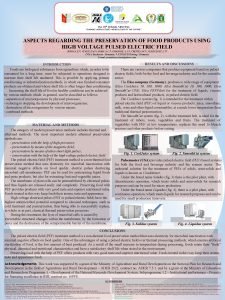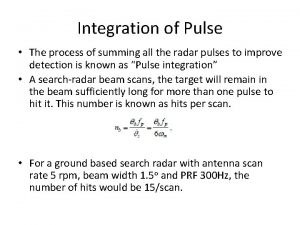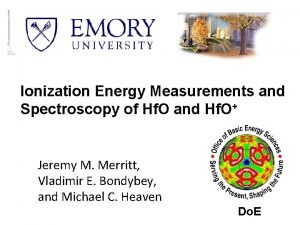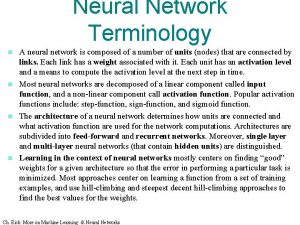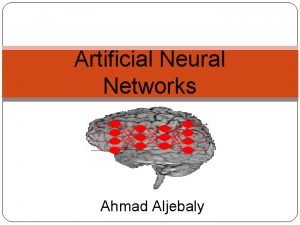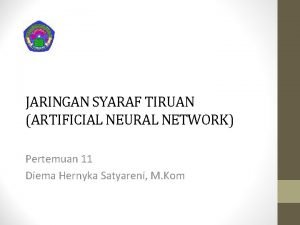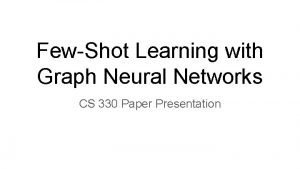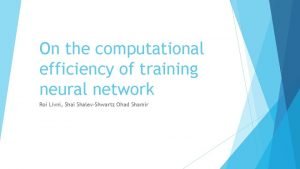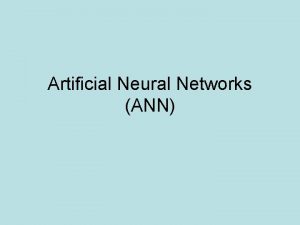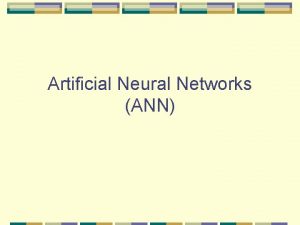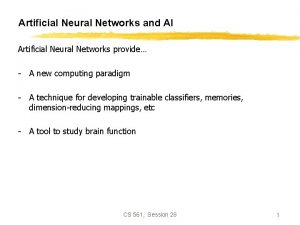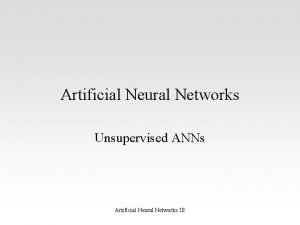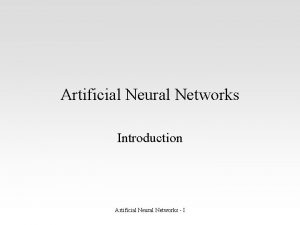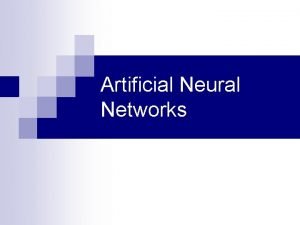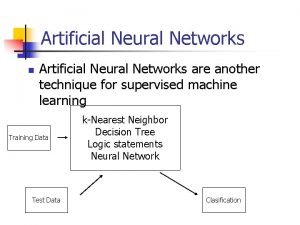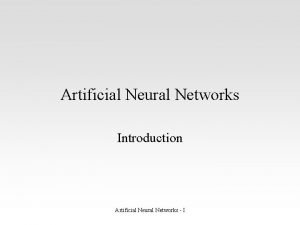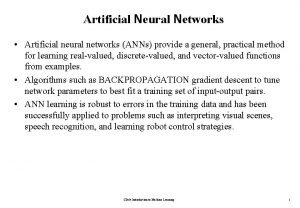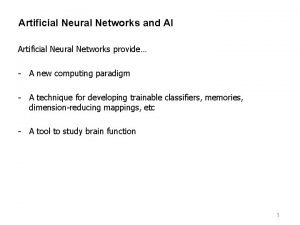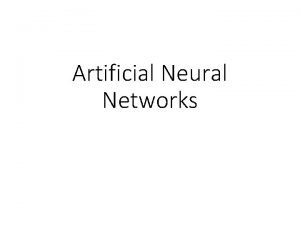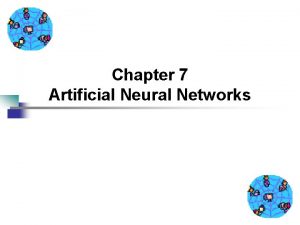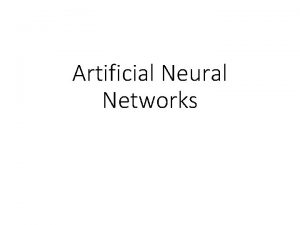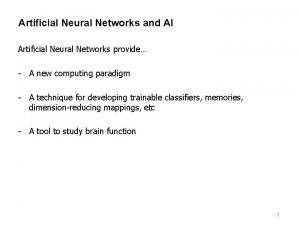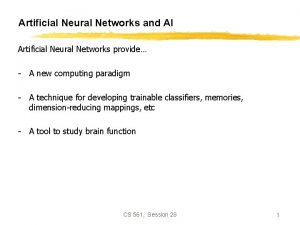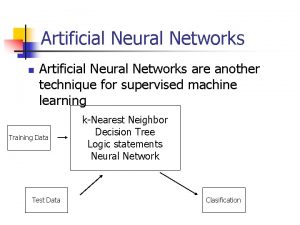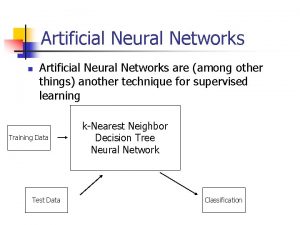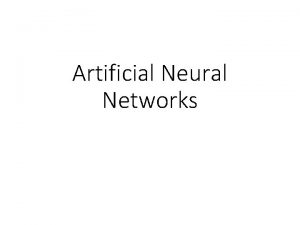Artificial Neural Networks ANN modeling of the pulsed



![Background (II) [L. Savoldi Richard et al. , Cryogenics, 2013] • Dynamic response of Background (II) [L. Savoldi Richard et al. , Cryogenics, 2013] • Dynamic response of](https://slidetodoc.com/presentation_image/dd0796dbed603d5b4fc31cfafc39876d/image-4.jpg)



















- Slides: 23

Artificial Neural Networks (ANN) modeling of the pulsed heat load during ITER CS magnet operation L. Savoldi Richard 1, R. Bonifetto 1, S. Carli 1, A. Froio 1, A. Foussat 2, R. Zanino 1 1 Dipartimento Energia, Politecnico di Torino, Italy 2 ITER IO, Cadarache, France Work performed under ITER IO contract ITER/CT/12/430 -554 The views and opinions expressed herein do not necessarily reflect those of the ITER Organization.

Outline • • Background approach 4 C model of the CS coil Artificial Neural Network essentials ANNs for the ITER CS – Development and training – Predictions • Conclusions and perspective 2

Background (I) The pulsed heat load to the cryoplant is an issue in tokamak inductive scenarios (rapid load variation, large power) Smoothing of the heat load addressed experimentally (HELIOS loop at CEA Grenoble, France) and numerically (4 C code, …) … “only” Q(t) from magnets to LHe baths is required for the assessment of the cryoplant operation 3
![Background II L Savoldi Richard et al Cryogenics 2013 Dynamic response of Background (II) [L. Savoldi Richard et al. , Cryogenics, 2013] • Dynamic response of](https://slidetodoc.com/presentation_image/dd0796dbed603d5b4fc31cfafc39876d/image-4.jpg)
Background (II) [L. Savoldi Richard et al. , Cryogenics, 2013] • Dynamic response of the loop very well predicted by the 4 C code • Develop simplified but fast Artificial Neural Networks to predict the dynamic heat load to the LHe bath, training/testing the ANN against the 4 C results SHe loop Accuracy: eave~ 1%, CPU 4 C / CPUANNs ~ 1004

Our approach Use the 4 C code to train and validate simplified but fast Artificial Neural Networks Apply to ITER TF coils Apply to ITER CS coils Check flexibility, accuracy and speed on HELIOS loop Develop ANN model to estimate heat load on LHe bath [L. Savoldi Richard et al, Cryogenics, 2013] 5

ITER CS coil 4 C MODEL LHe bath @ constant temperature power evolution at the HX only depends on inlet conditions HX to LHe bath • Drivers = AC losses induced by current operation • Dynamic response of the coil and of its cryogenic circuit can be predicted by the 4 C code Use 4 C simulations to train and validate the ANN to predict power evolution at the HX 6

ITER CS winding pack 4 C MODEL The 4 C model includes all 6 x 40 hydraulic channels and their thermal coupling all along the winding pack 7

ITER CS coil: superposition of single modules = T(t), p(t) and dm/dt(t) at the HX inlet for whole CS coil can be well approximated by weighted sum of T(t), p(t) and dm/dt(t) obtained in partial models for each single module, with rescaled circuit 8

Superposition verification Apply same driver = sigmoid heating • in all CS modules simultaneously • in single modules (with rescaled circuit) The whole CS dynamics can be obtained by superposition of single module Develop an ANN for each module 9

ANNs (I). Artificial neuron • In analogy with the brain neurons, combine more inputs x to produce a single output y Transfer function 10

ANNs (II). “Learning” network • Combine several neurons together to build a network No physics content, except for the proper choice of input and output variables! • “Train” the network = feed inputs & outputs to evaluate weights and biases through suitable training algorithms. 11

Single ANN development and training: CS 1 U • For each CS module develop a single ANN INPUT = Q(t) in one CS module OUTPUT = p(t), T(t) and dm/dt(t) at the HX inlet Feedback Train the network with 4 C simulations, scanning the input power range [200 W-4000 W] 12

Training process (I) • Distribution of power density changes in space and time along each hydraulic channel Chan 4, CS 1 U • Choice of most suitable power distribution? 13

CS 3 U CS 2 U CS 1 L Highest power Highest energy s 80 0 s 01 CS 3 L 17 9 01 14 9 -1 4 90 79 0 s s 97 5 -9 7 5 s 70 0 0 -7 0 60 0 -6 0 0 s s 50 0 90 - 70 - 90 s 70 11 - 11 1. 34 6 - s CS 2 L 1. 34 6 0 - Longest duration BUT small contribution to total energy Highest energy = largest contribution to the dynamics s 40 35 30 25 20 15 10 5 0 Highest power BUT small contribution to total energy (but CS 3 L) s % of total energy Training process (II) Longest duration 14

Single ANN prediction: simple waveform on CS 1 U SIMPLE heater waveform • ANN predictions in very good agreement with 4 C simulations in cases never seen in the training • CPU 4 C / CPUANN ~25000! 15

Single ANN prediction on other modules CS 2 U CS 3 U CS 1 L CS 2 L CS 3 L 16

Single ANN prediction: ITER-like waveform on CS 1 U GENERAL heater waveform eave~ 13%, epeak~ 3% CPU 4 C / CPUANNs ~ 4000 17

From single module back to CS coil 18

CS coil prediction: simple waveform -Very good accuracy: eave~ 3. 3% - CPU 4 C / CPUANNs ~ 12000 19

Final prediction: waveform from plasma operation scenario on the whole CS coil - Very good accuracy: eave~ 5. 9% -CPU 4 C / CPUANNs ~ 500 (ANN faster than realtime!) 20

Conclusions • Recently proposed approach to the simplified model of heat load on LHe bath through ANNs has been successfully applied to the ITER CS • The ANN model for the CS dynamic response developed and trained against data from the 4 C code proved to be: – Flexible – Accurate – Fast (faster than realtime!) 21

BACKUP SLIDES 22

Accuracy and speed t 4 C/t. NN Average error (%) Error at peak (%) 70 3600 15. 6 10. 4 CS 2 L 136 1856 14. 3 0. 6 CS 3 L 154 1600 22. 7 7. 6 CS 1 U 66 3789 12. 8 1. 4 CS 2 U 102 2440 13. 4 7. 7 CS 3 U 92 2667 13. 9 8. 9 All CS 620 500 5. 9 3. 9 # of sigmoids CS 1 L 23
 Pulsemaster pulsed electric field
Pulsemaster pulsed electric field Pulsed coherent radar
Pulsed coherent radar O,hf
O,hf Neural network terminology
Neural network terminology Conclusion neural network
Conclusion neural network Pengertian artificial neural network
Pengertian artificial neural network Artificial neural network in data mining
Artificial neural network in data mining Relational vs dimensional data modeling
Relational vs dimensional data modeling Helen c erickson
Helen c erickson Neural networks and fuzzy logic
Neural networks and fuzzy logic Few shot learning with graph neural networks
Few shot learning with graph neural networks Matlab neural network toolbox pdf
Matlab neural network toolbox pdf Lstm andrew ng
Lstm andrew ng Audio super resolution using neural networks
Audio super resolution using neural networks Sparse convolutional neural networks
Sparse convolutional neural networks What is stride in cnn
What is stride in cnn Audio super resolution using neural networks
Audio super resolution using neural networks Netinsights
Netinsights Visualizing and understanding convolutional neural networks
Visualizing and understanding convolutional neural networks Deep forest towards an alternative to deep neural networks
Deep forest towards an alternative to deep neural networks Neural networks for rf and microwave design
Neural networks for rf and microwave design Convolutional neural networks for visual recognition
Convolutional neural networks for visual recognition Predicting nba games using neural networks
Predicting nba games using neural networks On the computational efficiency of training neural networks
On the computational efficiency of training neural networks
